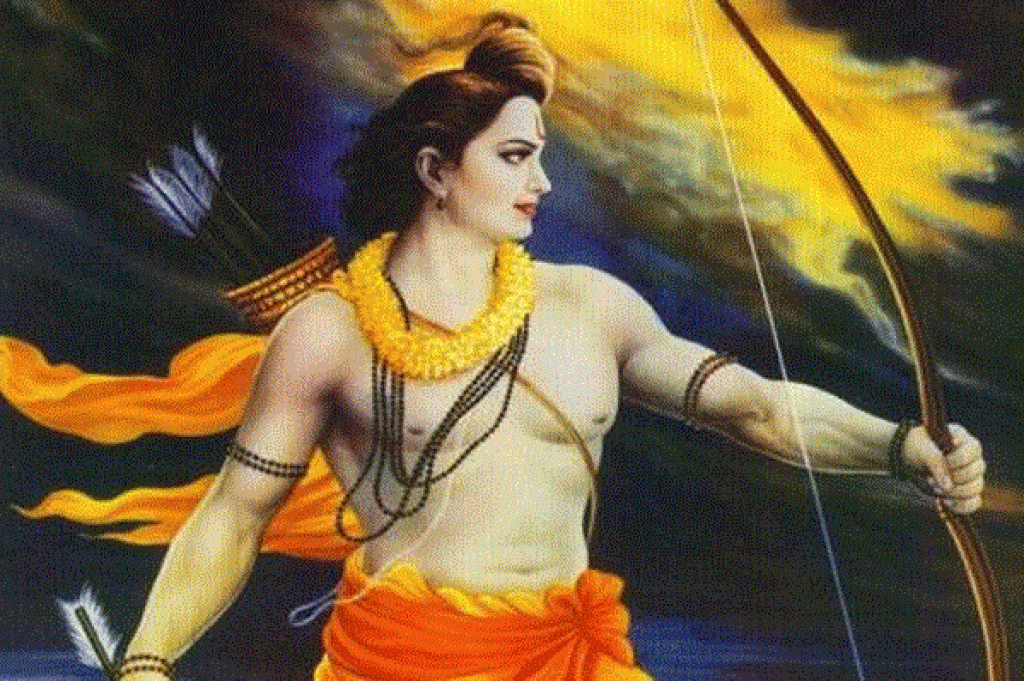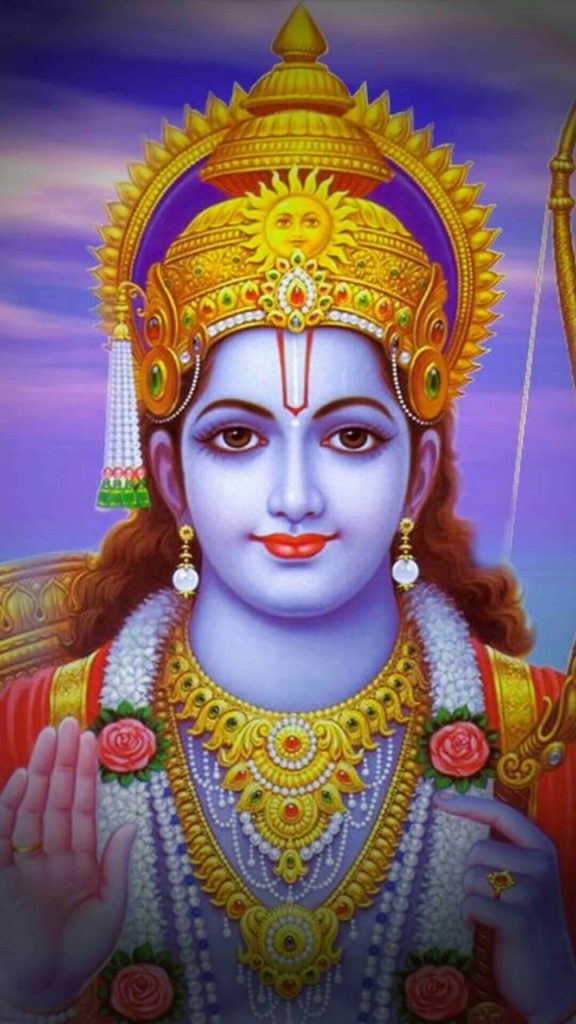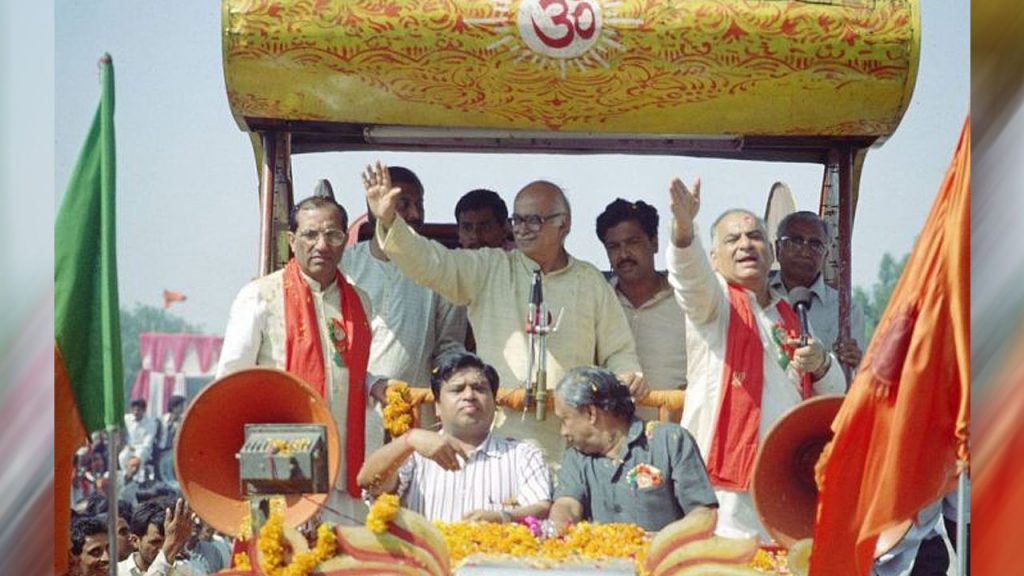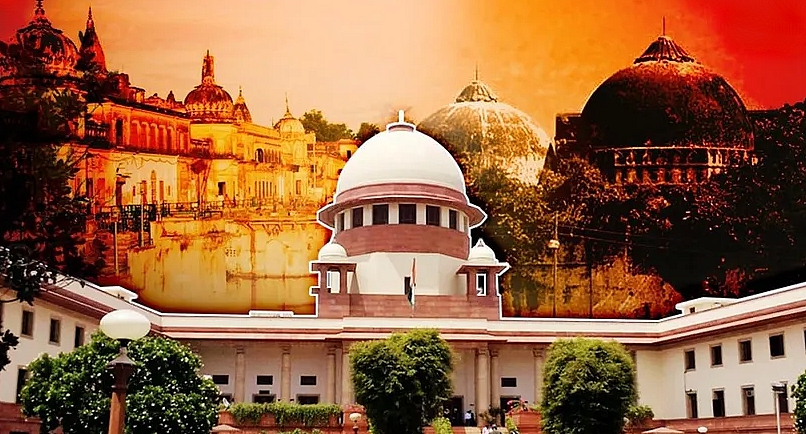
राम नाम तिहुं लोक मे सकल रहा भरपूर
The name of Ram is all-pervasive in the three worlds one who knows is near but the ignorant is very far from this truth.
जो जाने तिही निकट है, अनजाने तिही दूर।
Every religious text or teaching admires the fact that God is everywhere, we need not search for him in the outside world; within temples, mosques, churches or in any other kind of religious places, prayers from a pious heart are enough to reach him. Though we all have gone through our religious teachings, none of us has really understood it and the biggest example of this is the Ram Janambhoomi dispute that questioned India’s secularism and gave a chance to other countries to make fun of our pride of being secular. But India with a historic judgement and the way this judgement was cherished by everyone proved secularism is not a weakness of our country because, for each and every Indian, real secularism is the drive of keeping India first. Our commitments towards our religion and the awareness of our rights that can be contradictory to our counterparts might have divided us for a while but then our constitution, our law and patriotism united us again. This tussle of around 134 years, took around 4000 lives and made us a spectator of how lethal is the combination of religion and politics and how Indian politicians have contributed in moulding a small conflict into India’s longest-running property dispute for just 2.77 acres of land. Let’s go through the whole journey of the 4023 pages judgement.
Tracing the beginning of the Conflict
The Ram Janmabhoomi dispute was a title dispute on a plot of land in Ayodhya, Uttar Pradesh, which is believed to be the birthplace of Lord Rama, one of the most revered deities in Hinduism. It is said that a temple was built in early medieval ages to commemorate his birthplace (JanmaBhoomi) and that temple was thus called as the JanmaBhoomi temple. But, in around 1528-29 CE, this temple was destroyed on the order of Mughal Emperor Babur and the mosque was built purportedly at the same site by Babur’s commander Mir Baqi and as this mosque was built on the order of Babur, it was named as Babri Masjid. It is very important to understand the distribution of 67.703 acres of that disputed land. The mosque was built in between the total disputed land in around 2.77 acres, the other important structures in that land were a raised platform (Ram Chabutra) and Sita Rasoi. From around 1859, Hindus started worshipping outside the mosque in Ram Chabutra and Muslims were worshipping inside the mosque. Hence, the land of the mosque was basically occupied by Muslims and the other two structures were in the hands of Hindus. Few instances of violence have occurred. Thus, Britishers protected the land by building a fence that divided the land into an inner and outer court.

Now, let’s look at the series of events that finally made this communal conflict the biggest problem from medieval to modern India. The basic theme of this dispute for the 1st time was brought forth in 1853 when Hindu community representatives claimed that the land actually belongs to Hindus as the mosque was built after the demolition of a Hindu temple. But the actual interference of judiciary in this dispute began in 1885 when the priest of Ram Chabutra named Mahant Raghuvar Das put a case in Faizabad district court pleading for a Ram temple on that Chabutra, but the court denied the request. 1949 marked one of the biggest turning points in this communal conflict and took this controversy to a new high as propaganda of divine appearance of an idol of Ram Lala was created. But the propaganda, later on, was found to be fake. This broke into a huge protest between Hindu and Muslims. Both filed suits against each other. Court took it seriously and declared the land to be ‘disputed’ and banned any entry inside the premise until further notice. The then D.M of Ayodhya K.K Nair refused to follow the order of the then P.M. J.H Nehru to take off the idol and paved the path for getting this conflict to become worse.
Now from 1950 to 1961, a series of cases were filed in Faizabad District court regarding the ‘disputed land’-
- 1st case was in 1950 by Mahant Raghuvar Das requesting the court to allow Hindus inside the premise for worship.
- 2nd case was in the same year by Gopal Singh Visharad and with the same request.
- 3rd case was in 1959 by Nirmohi Akhada, filed asking for the control of the site from the administration.
- 4th case was in 1961 by Sunni Waqf board for stopping Hindu worship, removing idol, and giving control of the site to Waqf board.
This was the 1st half of the history of Ram JanmaBhoomi or Ayodhya dispute the 2nd half is way more complex than this let’s resolve this complexity by understanding an unexpected transformation of a legal, religious and communal conflict.
Politics and the Ayodhya Dispute
The real tragedy began from the 1980s because of the fairly planned political intervention into a general local and religious dispute. Before 1980, this dispute had not taken the entire nation and its politics, this only happened after the religious movement was backed by political support. In 1984, Vishwa Hindu Parishad (VHP) organised the Dharma Sansad and decided to bring the issue in limelight. They got huge support from BJP, established in the 1980s, as Lal Krishna Advani took up the responsibility to make this topic politically important with an aim to build Ram Mandir at the disputed site. Another major event or the vote bank policy that completely changed the face of conflict was, the astonishing steps taken by the Rajiv Gandhi government in 1986.

When the Muslims were not happy with the Supreme Court’s decision in ShahBano case, the then govt. brought an act in parliament in contradiction to the judgement of the Supreme Court. This act of appeasement angered Hindus and to appease Hindus the Govt., after the official decision of Faizabad district court, opened the premise for Hindus, to have darshan without delay. This was also used by the Congress to spread the propaganda of their equal care towards both Hindus and Muslims. Muslims against this constituted Babri Masjid Action Committee and protested and started rioting against the decision. 7 years from then, a lot of riots and protests occurred that claimed 1000 lives. Hindu politics in the 1980s started getting strength and momentum. VHP with the help of RSS and BJP started campaigns for construction of Ram Mandir. These campaigns lead to major events like the organisation of Ram Janaki Rathyatra in Ayodhya, Karseva from all across the India and formation of Bajrang Dal.
The next major events were; the merging of all petitions regarding the disputed site in 1989, by Lucknow bench of Allahabad High Court, and ordered a status quo to be maintained and the Shilanyas ceremony in Nov. 1989. The Shilanyas ceremony was a milestone event as this was carried out with due permission of the government and during the sanction of the court regarding the disputed site. Allowing Shilanyas and election campaigns from Ayodhya by Rajiv Gandhi government cannot be a coincidence. You can imagine how Congress played politics to safeguard its majority vote by giving pro-Hindu stances. Again, riots broke out and the country’s politics found its hands dipped in the blood of thousands of people. Not only Congress but BJP also derived benefit out of its support to VHP. Though Congress lost the election, BJP got 85 seats in December 1989 elections and it went on increasing mainly due to the aforesaid reason. Let’s now move to the 3rd half of this dispute where we will see the political plots that lead to another phase of social events that made the dispute more serious.
Rathyatra and the demolition of the Babri Masjid
In 1990, the then president of BJP Lal Krishna Advani decided to conduct a Rath Yatra from 25th Sept. to 30th Oct, from Somnath temple to Ayodha. But this Rath Yatra caused bloody trails due to riots, he couldn’t complete the yatra and got arrested in Bihar. During this Rath yatra, he gave fiery speeches to gather Hindu support on making of Ram Mandir at the disputed site which resulted in the death of 16 KarSevaks. In 1991, Congress won the election and Narshima Rao became the P.M but in U.P., BJP was in power and the Chief Minister was Kalyan Singh. Allahabad high court, the same year banned any permanent construction at the disputed site. Kalyan Singh Govt. submitted an affidavit stating that they will keep the honour of court’s decision. But in July 1992, KarSevaks started construction at the disputed site. Though it was controlled by the U.P. govt., still the court asked how did KarSevaks enter the site violating levels of security? This clearly shows political support in conducting the construction.

Narshima Rao also tried to bring together VHP and BMC but the talks failed. An affidavit was again submitted by U.P Govt., but he failed to maintain it too as around 2 lakh KarSevaks on 6th Dec., under the leadership of VHP and few BJP and RSS leaders, gathered at the disputed site and started the work of demolition of the masjid. The hands of police, BSF and other safety personnel were bound by the order of Kalyan Singh. Police were not allowed to conduct open firing and the result is known to everyone. Atal Bihari Vajpayee, L.K Advani, Uma Bharti and other senior leaders of BJP contributed to this event by giving fiery speeches on the night of 5th and 6th of December (by Liberhan commission).
The effect of this demolition was heart whelming as it claimed more than 2000 lives, caused the 1993 series of blasts in Bombay and riots all over the country. The consequences were not only limited in India rather it was international, but its effect was also clear and destructive in Pakistan and Bangladesh. Let us now move to the final stage of this dispute when the case was handed over to Supreme Court.
Shri Ram Janmabhoomi and the Supreme Court
In 2003, the ASI was handed over with the task of excavation to get whether there was a temple predating the mosque or not. Though the report didn’t make it clear that there was a temple or not but it stated that there was a large Hindu complex. Thus, on the basis of Archaeological pieces of evidence, accounts of European travellers, Ramcharitmanas, time of existence of the mosque finally on 30th Sept. 2010. It divided the disputed site between 3 parties:
- Ram Janmabhoomi Nyas got the central shrine where the idol was kept.
- Nirmohi Akhara got Sita Rasoi and Ram Chabutra.
- Sunni Waqf Board got the rest.
Hindus consider Ayodhya as the birthplace of Shri Ram and the faith of Hindus cannot be disputed.
Supreme Court of India.
But no one was happy with this decision and thus the case finally went to Supreme Court as an appeal in 2017. A five-judge bench led by Chief Justice Ranjan Gogoi put an end to the century-old dispute that has torn the social fabric of the nation. As the Sunni Waqf Board failed to provide enough evidence to give the land to Muslims, this unanimous historic judgement with the ratio of 2:1 came on 9th of November 2019 after continuous hearings for 40 days, and it paved the way for the construction of Ram Mandir at the disputed site and the court also allotted 5 acres land at a prominent site for the construction of the mosque.

This judgement was welcomed by both the community though there were still few who were not happy with the judgement. The way the judgement was respected was amazing and really unexpected. This proved once again that India is the best example of ‘Unity in Diversity’. The work of construction of the temple is under progress and ASI has found few pieces of evidence of the place being the Janmabhoomi of Ram Lala. The court also held that the act of demolition of the masjid illegal. To protect any further riots the court also ordered for ‘no celebration’ on the verdict as it is not that Hindus won or Muslims lost but it was a verdict that framed what evidence spoke so there must not be any celebration to hurt religious sentiments of Muslims.
This judgement made our faith on the Supreme Court, constitution and secularism as a soul of India stronger than ever. The court has proved that it will not let anyone compromise with their rights though it took a long time in giving the final verdict, the decision is in a way that it respected both the religion at the same time and did what evidence represented.
वहीं बसेंगे राम, वहीं बसेंगे अल्लाह,
वहीँ होगी आरती, वहीँ होगी अज़ान
लो फिर से जीत गया हिंदुस्तान